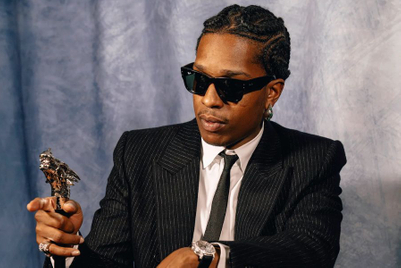
Luxury is an elusive concept. When most people think of luxury, they think “expensive.” And, yes, the price point of luxury is typically in the top 1 percent of all products in a category. However, a product in this extreme pricing tier will only be successful if the value it creates matches the price. As such, the price is a result of value creation—not the value itself. Therefore, to create luxury, brands need to create value. But what drives this value? And why do people buy luxuries?
Most people I talk to, even seasoned managers, answer intuitively with “social status.” Social status is surely a part of a luxury brand’s value, but the overall value is so much more than that. This is critical for luxury brands to understand: The product and its qualities (design, features, materials, craftsmanship) don’t create luxury value. The product merely signifies “luxury” to the public (or it doesn’t).
Once people perceive a brand as a luxury, effects kick in that drive its product’s value in a nonlinear way. Some drivers, like social status, are intuitive, but others are hidden in consumers’ subconscious. These hidden drivers are of particular interest because they offer bigger opportunities for brand differentiation, brand storytelling, and other competitive advantages. Our research revealed that “enhanced attractiveness,” “expert signals,” “public protection,” and a “mindset shift towards new experiences” were four hidden drivers that are more crucial than most luxury brands realize.
Hidden aspect #1: enhanced attractiveness
We performed a study that placed the same person in two different contexts: a luxury context and a non-luxury context. In the luxury context, a woman was driving in a Bentley convertible and a man was wearing a Patek Philippe watch. In the non-luxury context, the same woman was driving a Volkswagen and the same man was wearing a Swatch. The study was such that the participants didn’t know the topic was luxury, but instead, they thought it was a general psychological survey. They were asked their personal views about the people in these contexts, and a single participant either evaluated the first or the second situation exclusively without knowing the other context existed.
The stunning results showed us that physical beauty and attractiveness are not absolute evaluations, but rather, they depend on context. The Bentley and the Patek made their owners seem significantly more attractive, desired, and beautiful to evaluators than the same owners wearing non-luxury products. After the participants answered all the questions, we asked them if they would ever be influenced in their evaluation by luxury. Whether or not people verbally stated that luxury products influenced them, the results were consistent. This indicates that people have a high sensitivity to this hidden effect, regardless of their views on luxury. In other words, people subconsciously ascribe enhanced attractiveness to luxury, and that expected attractiveness drives the value of luxury products significantly.
The expectation of perceived expertise is also an important driver of luxury value.
Hidden aspect #2: expert signals
Participants in this study also attributed a greater amount of “expertise” to the people who were pictured using luxury brands, as compared to those people shown using non-luxury brands. The luxury context triggered a conviction that people with luxuries knew a considerable amount of information about many things, making them seem like experts. The expectation of perceived expertise is also an important driver of luxury value.
Hidden aspect #3: public protection
A third and more complex hidden aspect is something I call “public protection.” When participants looked at the aforementioned luxury context, they concluded that those people using luxuries—unlike people using normal brands—were somehow allowed to do a lot of things others couldn’t and wouldn’t fear reprisal for doing them. This sense of public protection is highly desired and drives luxury value in a nonlinear fashion.
Hidden aspect #4: mindset shift towards new experiences
Participants assumed that the people pictured using luxury products were having a lot of fun and experiencing spectacular or unusual things. In other words, luxury can create a mindset that allows people to try new experiences and break out of their common patterns and usual routines. The desire for exceptional experiences is also a critical driver of luxury value and should not be underestimated.
Why brands should care
When uncovered, these four hidden drivers can offer brands significant opportunities to create value. People anticipate those aspects from luxury, so the more brands center their storytelling around these subconscious desires, the more they will be able to create a relevant brand proposition.
When we analyzed luxury, lifestyle, and consumer brands, it became obvious that a brand’s storytelling directly correlated with its market success. Brands that project who they are with clarity—not just on paper but through the superiority of their daily execution—have a drastically higher chance of successfully connecting with their customers, while brands that aren’t clear usually fail. For brands, simply focusing on heightening social status isn’t enough. Managers need to think beyond status and tap into the more hidden aspects of luxury value to create a lasting competitive advantage.
Daniel Langer is CEO of the luxury, lifestyle and consumer brand strategy firm Équité, and the professor of luxury strategy and extreme value creation at Pepperdine University in Malibu, California. He consults some of the leading luxury brands in the world, is the author of several luxury management books, a global keynote speaker, and holds luxury masterclasses in Europe, the USA, and Asia. Follow @drlanger



.jpg&h=334&w=500&q=100&v=20250320&c=1)


.png&h=334&w=500&q=100&v=20250320&c=1)





.png&h=334&w=500&q=100&v=20250320&c=1)

.png&h=268&w=401&q=100&v=20250320&c=1)
.jpg&h=268&w=401&q=100&v=20250320&c=1)




